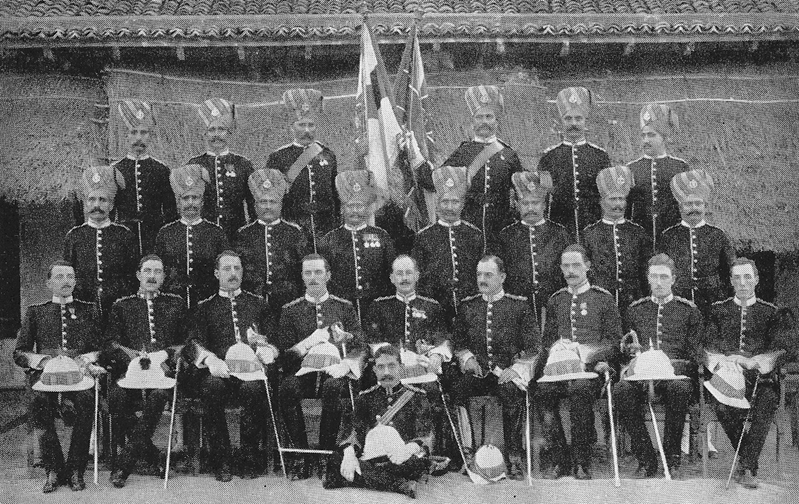British and Indian officers of the 1st Brahmans, 1912.
The regiment was the senior-most among the twelve Bengal Native Infantry regiments that survived the Great
Indian Rebellion of 1857-58. It was accordingly one of the small number of Bengal regular infantry regiments to retain the traditions of East India Company service in the new post-Mutiny army. Renumbered as the 1st of the Bengal line, it subsequently saw active service in the
Third Anglo-Burmese War of 1885-87. Following the
Kitchener reforms of the Indian Army, when the names of the presidencies were dropped, the regiment became the 1st Brahman Infantry in 1901.
In 1914, the regimental centre of the 1st Brahmans was located at
Allahabad and it was linked with the 3rd Brahmans. The regiment was recruited from United Provinces
Brahmins, Garhwali Brahmins and some Punjabi Mussalmans. Full dress uniform of the sepoys included a high khaki turban with red fringe, a scarlet kurta (long coat) with white facings, white waist-sash, dark blue trousers and white leggings.









